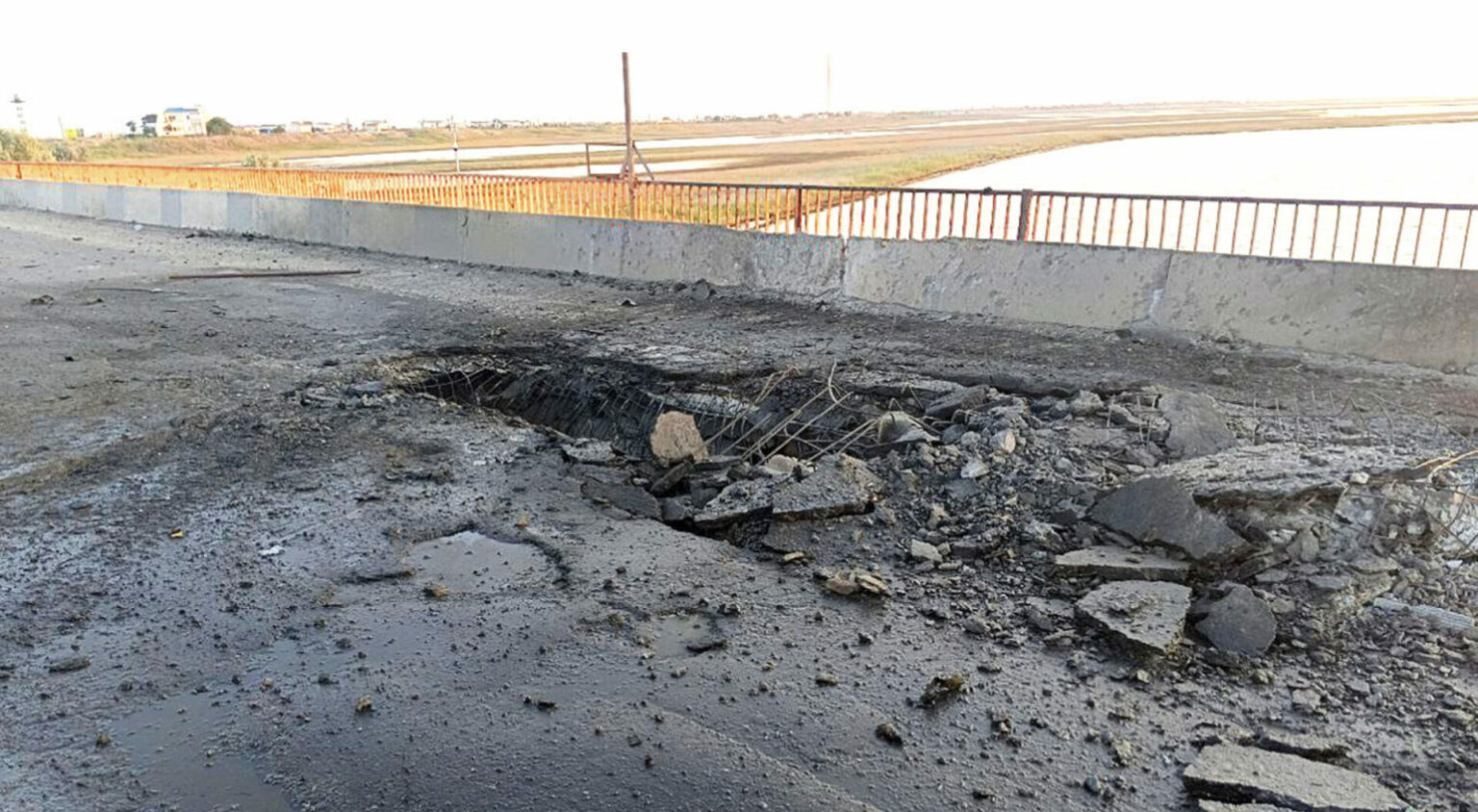A bridge connecting the annexed Crimean peninsula with the Russian-occupied part of southern Ukraine was damaged in the attacks, leading to heightened tensions between the two sides.
Strike and Announcement:
During the night, the Chongar Bridge, which connects Crimea, annexed by Russia from Ukraine in 2014, to the Kherson region of Ukraine was hit, causing damage. The Russian-appointed governor of Crimea, Sergei Aksyonov, announced the strike via Telegram, stressing that there were no casualties.
Conflicting reports:
In response to the strike, Russian Kherson governor Vladimir Saldo claimed that the targets of the Ukrainian attacks were “bridges” near Chongar. Saldo provided photos showing significant damage to one of the bridges. These events took place in the middle of a counter-offensive by Ukraine to take back territories occupied by Russian troops.
Assessment and repair of damages:
The chairman of the parliament of Crimea, Vladimir Konstantinov, said that the damage to the bridge was not serious and that repairs were expected to be completed within a few days. However, the extent of the damage could not be independently verified, leading to questions about the bridge’s functionality and effects on the area’s transport network.
Missile Origin Speculation:
Vladimir Saldo speculated that the explosion could have been caused by a long-range cruise missile, possibly from France. His speculations were based on missiles delivered by France and Great Britain to the Ukrainian army. However, the claim could not be independently confirmed, leaving room for further investigation.
Potential Retaliation and Warnings:
Russian Defense Minister Sergei Shoigu has accused Ukraine of planning to use US-made HIMARS and UK-supplied Storm Shadow missiles to attack Russian territory, including Crimea. He issued a warning, stating that if such missiles were employed outside the primary war zone, immediate strikes on decision-making centres in Ukraine would be triggered. These statements heighten concerns about further escalation of the conflict and the potential for wider ramifications.
The significance of the bridge:
The damaged bridge plays a crucial role in connecting Crimea with mainland Ukraine. It enables the transfer of Russian troops stationed in Crimea to Kherson province in southern Ukraine. The province is strategically important because it is controlled by both Russia and Ukraine and is the focus of fighting and attacks in the ongoing conflict.
Events and Symbolism of the Past:
The Crimean peninsula has seen regular strikes in recent months, mainly by drones. These attacks have added to the already tense situation in the region, as Crimea remains a disputed site of conflict following its annexation by Russia. The recent bridge damage is not the first of its kind. In 2022, an explosion caused a partial collapse of a bridge connecting Crimea with Russia, resulting in casualties. The 19-kilometre Kerch Bridge, the longest in Europe, symbolises Russia’s claims on Crimea. Russian President Vladimir Putin personally opened the bridge in 2018 and emphasised its importance in the strategy of the Moscow region.
Accusations and Denials:
Russian-appointed authorities in occupied Ukraine have accused Kyiv of targeting bridges between Crimea and mainland Ukraine. However, the Ukrainian authorities have not responded to these accusations, and Ukraine denies any involvement in the attacks. The lack of an immediate response raises questions about the complexity of the situation and the possible motives behind the strikes.
The event exacerbates the already tense confrontation as both sides trade accusations, raising worries about the possibility of future escalation in the area. Transportation is disrupted and the difficulties facing the impacted areas on a humanitarian and economic level are made worse by damage to vital infrastructure, such as the bridge. The international community keeps a close eye on the situation and emphasises the need for a diplomatic solution and a de-escalation of hostilities to bring stability back to the area.













